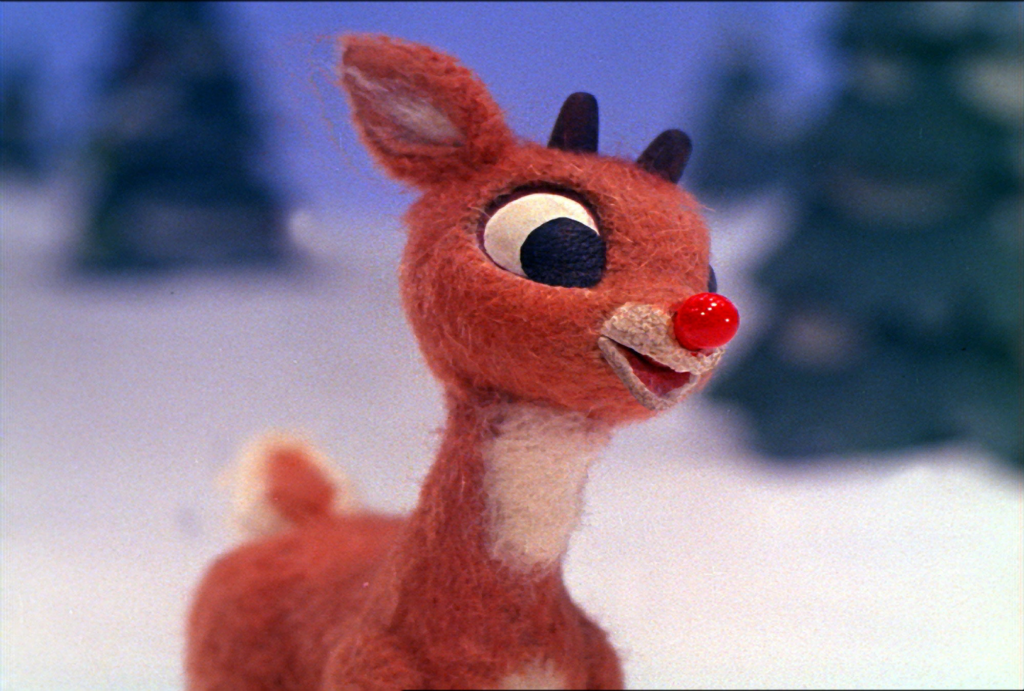Rudolph’s Propagantastic Beginning

There are no Gen-Xers that don’t have fond memories of Rankin/Bass Christmas specials (at least the ones who aren’t sad and miserable). They were part of the magic of Christmas for my generation. Earlier generations had one-horse open sleigh rides, chestnuts roasting on an open fire, and Bing crooning about how he’d be home for Christmas.
I suppose we still had Bing, but it was Charlie Brown and Rankin/Bass that signified we would soon be getting a two-week break from school and driving our parents insane at 5:00 am on December 25.
The joy of the network TV Special is utterly impossible to explain to Millennials and Zoomers. There is simply no reference point. First of all, there was only one month in the year they could be watched at all. Not would not, could not. It was utterly impossible to see any of them the rest of the year. There was no videotape (unless your parents had a ton of money), obviously no streaming, and there was no way at all to watch it any other time of the year. You had no control over it whatsoever, it was a big part of what made it so exceptional for us. Consequently, when you heard CBS’ bongo drums that announced a special was about to start, coming from the TV room, you charged full speed to get there before the first second of the show lit up the screen. If you missed that special, that was it, it would be gone until next year.
The fundamental problem with Charlie Brown was that that show was frankly depressing. Not so Rankin/Bass. They were always upbeat.
A big part of what made them such a singular experience was that the animation was in stop-motion. You never really saw that anywhere *else.
Out of intellectual laziness, I assumed that Rankin/Bass had run a small studio with some dedicated artists and that they made all of their TV specials in-house. Wrong call.
I got my first clue a long time ago.

Sure, I knew The Hobbit had a Japanese influence I just didn’t realize it wasn’t the first Rankin/Bass production made in Japan. Mostly because Rankin/Bass didn’t credit their animators properly.
Rankin and Bass were producers that mostly had worked in advertising until a friend of Jules Bass met a Japanese trade delegate who was looking for somebody interested in animation. Rankin and Bass were invited to Japan while they thought that the Japanese animation was certainly cheap enough to be worthwhile, what really caught their attention was the stop-motion work that Tadahito Mochinaga was doing.
Here things become slightly problematic. ‘Tad’ Mochinaga got his start in children’s entertainment in WWII. Which is to say he was making propaganda cartoons for kids.
The beloved Japanese folkhero Momotaru is an excellent example of an Aspirational hero as The Deliverer.
“Momotarō was born from a giant peach, which was found floating down a river by an old, childless woman who was washing clothes there. The woman and her husband discovered the child when they tried to open the peach to eat it. The child explained that he had been bestowed by the Gods to be their son. The couple named him Momotarō, from momo (peach) and tarō (eldest son in the family). When he was just five years old, he was able to cut a big tree with just an old knife
When he matured into adolescence, Momotarō left his parents to fight a band of Oni who marauded over their land, by seeking them out in the distant island where they dwelled (a place called Onigashima or “Demon Island”). En route, Momotarō met and befriended a talking dog, monkey and pheasant, who agreed to help him in his quest in exchange for a portion of his rations. At the island, Momotarō and his animal friends penetrated the demons’ fort and beat the band of demons into surrendering. Momotarō and his new friends returned home with the demons’ plundered treasure and the demon chief as a captive.”
He’s still popular today but in WWII he was impressed into military service. Mochinaga’s first film was Momotarō and the Sea Eagles. It’s a refashioning of the above story, where the Oni are Americans and the Fortress that gets raided is Pearl Harbor.
The second film was Momotarō and the Sacred Sailors. Given its length, it qualifies as the world’s first anime feature, given the subject matter the anime industry likes to keep it swept under a rug.**

Its maker Mochinaga moved to Manchuria or Manchukuo as it was called at the time. He apparently made himself popular with the locals because when the Russians showed up he was able to present them with papers claiming he was Chinese.
He stayed on in China, despite the raging civil war and the fact that a Japanese was about as popular as a plague rat. I suspect he was a Communist; a lot of the pre-war Japanese art scene were into that. Manchuria didn’t have a lot for a filmmaker to work with though. There were maybe 20,000 feet of unexposed film left in China at that time, and art supplies like ink? Forget it. Traditional animation was out because there just weren’t enough materials to draw cells. However, stop-motion puppets only have to be painted once. His Chinese propaganda pieces were a big hit with the Han.
Around 1954, local officials let him know that they really liked the puppets and everything, which was why he would be ALLOWED to return to Japan if he hot-footed it now.
So, he went home and founded a stop-motion animation studio that barely kept the lights on. He had reservations about working for Americans, but Rankin and Bass paid big (compared to Japan) and on time. The (1963) equivalent of $4.5 million was pumped into Rudolph the Rednosed Reindeer. General Electric was footing the bill and the show’s Elves were in the GE exclusive commercials.
Rankin/Bass continued to work with Mochinaga creating stop-motion holiday traditions like Santa Claus is Coming to Town, Little Drummer Boy, and others. Although, they also made Mad Monster Party. As near as I can tell, (and I could be wrong) A year without a Santa Claus was their last collaboration. Mochinaga finally changed his name to Fang and moved back to China, where he died at the age of 80 in 1999.
Rankin/Bass hired a Mochinaga’s apprentice and continued on with stop-motion as if nothing had happened. Stop-motion ran out of steam in the late 1980s. The writing on the wall appeared. As primitive as it was, CG was going to wipe out stop-motion.
Another interesting story was Rankin/Bass’ relationship with a scrappy little upstart they ran into in 1964 named Toei. Toei got a better deal than Mochinaga, they got the Japanese rights to their productions. Given how low Japan’s GDP was right after the war I suspect Rankin/Bass’ attitude was ‘fuck it, who cares about Japanese rights? The Japanese cared. They didn’t know Rudolph from Adam but they knew all about King Kong.
Which is how King Kong came into being on both sides of the Pacific.
When Toru Hara left Toei he took his relationship with Rankin/Bass with him. That relationship was important when he founded Topcraft because he had something big in mind and he’d need money for it. Rankin/Bass didn’t particularly care about what they were bankrolling, they just needed their Scrooge cartoon done on time.
The Stingiest Man in Town was a musical version of A Christmas Carol told from the POV of an insect named B.A.H. Humbug. I might have seen it, but I honestly don’t remember it and I’m not sure anybody else does either.

For once the movie was properly credited and it reads like an anime dream team: Ikkô Kobayashi, Tsuguyuki Kubo, Katsuhisa Yamada, and Hayao Miyazaki himself. This forgotten remake of a forgotten 1956 Alcoa Theater live-one-night-only performance is what started the ball rolling for one of the biggest classics of Anime, Nausicaä of the Valley of the Wind.
In 1985 Topcraft broke up into two companies, and Rankin Bass bet on the wrong horse.
The half of Topcraft that they did NOT work with became the legendary Studio Ghibli.
The one Rankin Bass did work with went on to become Disney Animation Japan. They locked out Rankin Bass and proceeded to fail to dominate the anime market in the early 80s when Disney could have done that out of petty cash.
Anime coming up in the world was the end for Rankin/Bass. They shuttered production in 1987. They did make a halfhearted comeback at the tail end of the 20th century, they put together a couple of productions using South Korean artists that didn’t really go anywhere. Their last project together was, of course, a Christmas special. Santa Baby. It was successful enough that they could call it a win, dissolved Rankin/Bass, and sold out to Warner Brothers.
Much as Generation X loved the stop-motion animated Christmas Specials, it would never be the same for our Zoomer kids.
Except when they were very little, I recall the Dark Spawn being enchanted with them when they were tiny. It’s easy to believe in magic when you are young enough to believe in Santa Claus.
Merry Christmas, I’m done here.
*Except for the awesome Jason and the Argonauts, plus Sinbad movies.
**A Japanese film made in 1945 where the subhuman natives were delighted to have Japanese culture forced upon them is understandably awkward. Also, it was used to recruit very young Kamikazes.

